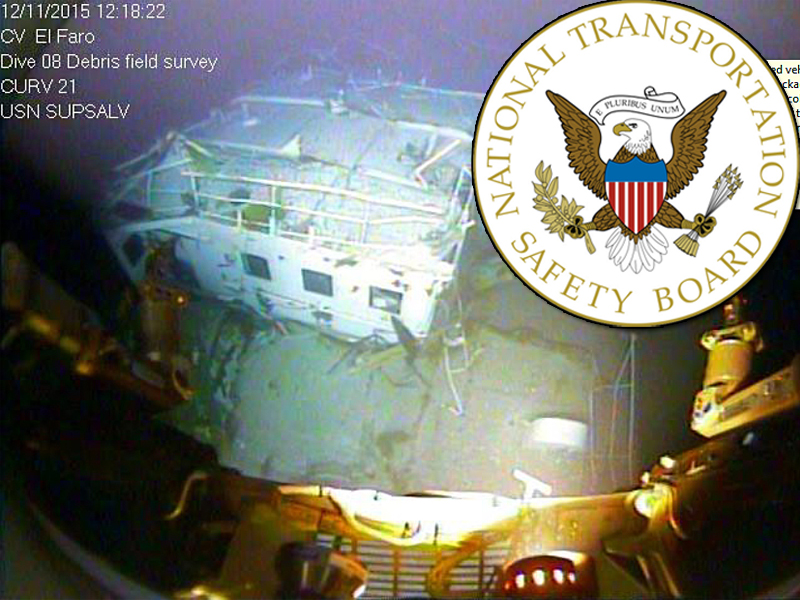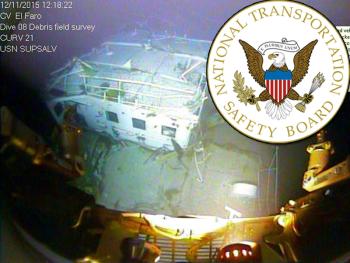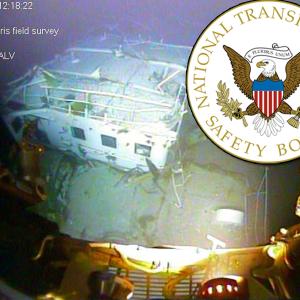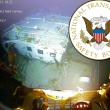NTSB to launch second mission to search for El Faro evidence, clues
WASHINGTON. D.C. – The National Transportation Safety Board announced Thursday that it would launch a second expedition to search for evidence in its investigation of the loss of the cargo ship El Faro, which sank in the Atlantic off Bahama during a hurricane on Oct. 1, 2015, and took with it 33 crew members, including two from Rockland who were among five Maine Maritime Academy graduates.
A key objective of the upcoming mission, which is expected to begin in April and last about two weeks, is to locate the voyage data recorder and to provide investigators with a more extensive and detailed survey of the shipwreck.
The exact launch date will be announced later.
"The voyage data recorder may hold vital information about the challenges encountered by the crew in trying to save the ship," said NTSB Chairman Christopher A. Hart in a press release. "Getting that information could be very helpful to our investigation."
If its schedule holds, the NTSB's upcoming mission will happen more than a month after the U.S. Coast Guard Board of Investigation concludes 10 days of hearings into the loss of El Faro. The first session of Coast Guard hearings will focus on the pre-accident historical events relating to the loss, the regulatory compliance record of El Faro, crew member duties and qualifications, past operations of the vessel and the Coast Guard's search and rescue operations.
According to NTSB Public Affairs spokesman Peter Knudson, once his agency decided to go back out and search for missing evidence and more clues, it was a matter of scheduling with the resources that could do the work.
"We wanted to do it as soon as possible, but the restriction was availability," said Knudson on the phone Thursday.
A search area of approximately 13.5-square-miles will be photo- and video-documented by Sentry, an autonomous underwater vehicle that will be launched from the research vessel Atlantis, which is owned by the U.S. Navy and operated by the Woods Hole Oceanographic Institution. Sentry can work at depths of nearly 20,000 feet and can be equipped with a wide array of sonar, camera and other sensors.
Knudson said that Woods Hole has a full schedule, as does the University National Oceanographic Laboratory System and other entities, and the NTSB worked with all of them to free up time to make the equipment available.
"We would like to have been out there sooner, but this is the soonest we could gather the resources," said Knudson.
Knudson also said that the NTSB and the Coast Guard have some of the issues to address in their investigations, but that the NTSB’s is strictly a safety issue.
“There is some overlap,” said Knudson. “They also want to make sure regulations followed. But se are focusing on safety exclusively. What caused it and all the factors that contributed to it. We want to learn all we can to ensure we do what we can to avoid a similar incident in the future.”
The 790-foot cargo ship was located in about 15,000 feet of water off the Bahamas on Oct. 31. Over the next few weeks the ship and the debris field were documented with a video camera mounted on a remotely operated vehicle.
Video revealed that the navigation bridge structure and the deck below it had separated from the ship. The missing structure included the mast and its base where the VDR was mounted. Neither the mast nor the VDR was found in the vicinity of the navigation bridge structure. The initial search mission was completed Nov. 15.
After reviewing the data and video from the initial search, investigators shared findings with NTSB senior leadership, who determined that a return mission to El Faro was warranted.
A VDR of the type that was mounted on El Faro is capable of recording conversations and sounds on the navigation bridge, which could provide investigators with important evidence as they seek to understand the sequence of events that led to the sinking. In addition, investigators hope to obtain high quality images of the bridge, debris field and hull.
If the VDR is located, another mission using a remotely operated vehicle capable of recovering the recorder will be initiated.
Families of 10 El Faro crew members, killed when the container ship sank Oct. 1, 2015, off the Bahamian coast after running into Hurricane Joaquin, reached a settlement last month with the ship's owner following the disaster that claimed a total of 33 lives. Two of the 23 other crew member families whose claims against the ship's owner, TOTE Maritime Puerto Rico, remain outstanding are Danielle Randolph and Dylan Meklin, both from Rockland.
Radio contact with El Faro was lost around 7 a.m. on Oct. 1, when Capt. Michael Davidson of Windham called the company's emergency call center to report a marine emergency. In the recorded satellite phone call, Davidson reported that there was a hull breach, that a scuttle had blown open and that there was water in hold number 3. He also said that the ship had lost its main propulsion unit and the engineers could not get it going. The operator then connected the captain with the Designated Person Ashore. The DPA told investigators that the captain had communicated similar information to him that was provided to the call center operator, and also that the captain had estimated the height of the seas that El Faro was encountering to be 10 to 12 feet.
On Nov. 2, the NTSB confirmed that the wreckage of El Faro had been found on the bottom of the ocean, following the early discovery of a small debris field weeks earlier. On Oct. 5, the U.S. Coast Guard announced it had found a life boat with El Faro markings, and a body in a survival suit that could not be identified or confirmed as being connected to El Faro. On Nov. 16, the NTSB said the U.S. Navy had completed it contracted work documenting the sunken cargo ship and its debris field, but was unable to locate the ship's Voyage Data Recorder, which had been mounted under the ship's mast on the navigation bridge. The navigation bridge had been located during the search, but the mast and the VDR remain among the missing.
Sentry was developed with funding from the National Science Foundation and designed and built at WHOI. It is operated through the National Deep Submergence Facility, a center funded by the National Science Foundation, the Office of Naval Research, and the National Oceanic and Atmospheric Administration and managed by WHOI.
The NDSF operates, maintains and coordinates the use of deep ocean research vehicles in coordination with the University National Oceanographic Laboratory System, an organization of academic institutions and national laboratories involved in marine research.
Related stories:
• Hearing set for U.S. Coast Guard Board of Investigation into El Faro sinking
• El Faro crew from Rockland not among group of 10 to settle with ship's owner TOTE Maritime
• UPDATED: NTSB releases public docket video, photos of 'El Faro' debris field
• Lawsuits filed on behalf of Rockland El Faro crew members
• NTSB learns navigation bridge, data recorder missing from wreckage of sunken El Faro
• Flags in Knox County to half-staff in in honor of El Faro crewman, Dylan Meklin
• NTSB issues update on investigation into sinking of El Faro
• Update: Fifth Maine Maritime graduate among those missing at sea in El Faro sinking
• Flags in Knox County at half mast to honor El Faro second mate, Danielle Randolph
Reach Editorial Director Holly S. Edwards at hollyedwards@penbaypilot.com and 207-706-6655.
























